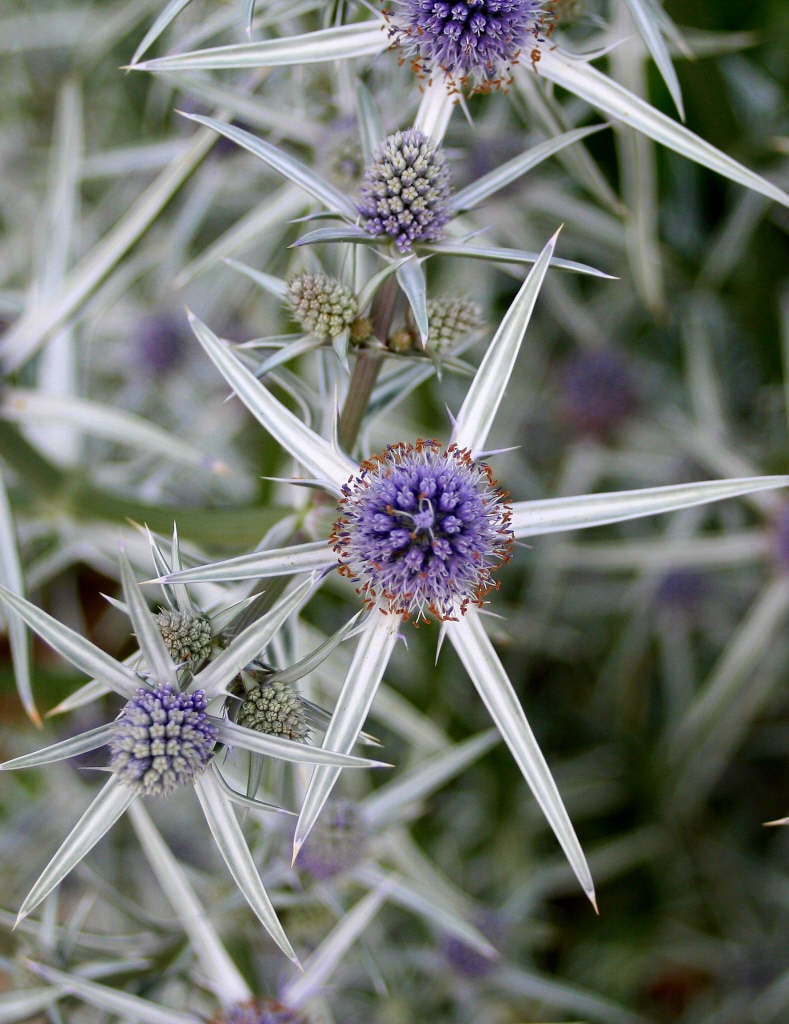Size
Ultimate height
0.1–0.5 metresTime to ultimate height
2–5 yearsUltimate spread
0.1–0.5 metresGrowing conditions
Moisture
Well–drainedpH
Acid, Alkaline, NeutralColour & scent
| Stem | Flower | Foliage | Fruit | |
| Spring | Green White | |||
|---|---|---|---|---|
| Summer | Blue Grey Silver | Green White | ||
| Autumn | Green White | |||
| Winter | Green White |
Position
- Full sun
Aspect
South–facing or West–facing or East–facing
Exposure
ExposedDrought resistance
Yes Hardiness
H4Botanical details
- Family
- Apiaceae
- Native to GB / Ireland
- No
- Foliage
- Evergreen
- Habit
- Clump forming
- Genus
Eryngium can be annuals, biennials or perennials with simple or divided leaves, often spiny edged, and cone-like flower-heads often surrounded by an involucre of conspicuous spiny bracts
- Name status
Correct
- Plant range
- Morocco
How to grow
Cultivation
Grow in dry, well-drained soil that is poor to moderately fertile. Full sun is essential as is protection from winter wet
Propagation
Propagate by seed or root cuttings in late winter
Suggested planting locations and garden types
- City and courtyard gardens
- Coastal
- Cottage and informal garden
- Gravel garden
- Rock garden
- Wildlife gardens
- Flower borders and beds
Pruning
Although you can cut back flower stems after flowering the seedheads are a very attractive feature so are usually left over winter
Pests
May be susceptible to leaf and bud eelworms, and slugs and snails
Diseases
May be susceptible to root rot and powdery mildews
Get involved
The Royal Horticultural Society is the UK’s leading gardening charity. We aim to enrich everyone’s life through plants, and make the UK a greener and more beautiful place.
